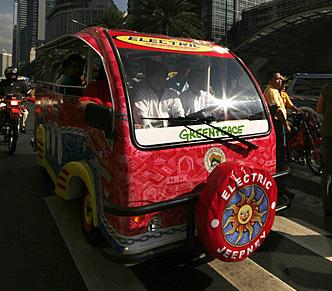For some time, I’ve wanted to change the landing page of my website to my blog, since it was the only part of my website that was changing on a regular basis. I figured the best way to do that was to change over from the blogging tool I had been using for years (Google’s Blogger) to a more full-functioning solution that made adding content and customizations easier. After briefly considering a few Content Management Systems such as Joomla and Drupal, I ended up choosing WordPress. WordPress isn’t really a full content management system, but I’ve played around with WordPress before with an account on WordPress.com, which anyone can get for free. What attracted me to WordPress was that it installs the scripts and database locally and it is open source. Because it’s open source, it has attracted a number of developers who have written plug-ins for it. There are more than 4,000 WordPress plugins available. It also uses ‘widgets’ which allow you to customize the sidebar with things like a calendar, archive list, blogroll, and many other features. Blogger had the ability to do this too, but much of it required you to go in and edit the template, which was very painful and prone to error. And if you ever switched templates, you had to start over with your customizations. Because I host the blog on my own domain, Blogger also required me to completely regenerate every page whenever I made the slightest change to the template. That was taking longer and longer as my archive of postings grew.
WordPress uses PHP and MySQL to serve its pages. If I make a change to the template, it doesn’t need to regenerate any pages since they are generated on demand. I had hoped that by using WordPress’s pretty permalinks that all of my Blogger links could be preserved so as not to lose search engine traffic, but because I was moving the whole blog up a level in my domain and also because every page in a WordPress blog is essentially a php script, it didn’t work out that way. So I’m becoming skilled in adding ‘301 redirects’ for my more popular pages in .htaccess file to maintain my website’s search engine mojo.
Another big change I made last month was to switch hosting services. I had been running on a Windows IIS-based platform, something I chose about 8 years ago without thinking about it too much, to a Linux Apache-based platform that now allows me to have SSH login privileges. I think that once you have a website up and running, there is a natural reluctance to making major changes because you never know how much work it’s going to be to get all the pages and email addresses working again. Windows doesn’t care about capitalization in the URL so a file called ‘image.JPG’ and one named ‘image.jpg’ are the same file. Not so with a Linux system. This can lead to a lot of broken links if you were sloppy when you created the original links. I also had a number of sites I help host as a ‘re-seller’ under my previous web host plan and I took the opportunity to combine them all into subdomains that are under on my upper-level domain. This makes them easier to manage and cheaper for everyone.
I started taking two classes at the local college in January on web technologies that I knew about, but felt I had only a superficial understanding of them. It’s pretty easy to learn HTML through osmosis, by using the ‘view source’ feature and by referring to a manual. But the technologies that run the web now, namely CSS, Javascript, PHP, and content databases have completely changed how the web works. You really have to understand a lot more to put together a website these days and you can’t do it by making static HTML pages. So I’m going through the rigor of taking these classes, doing the assignments and projects, and having many ‘a ha!’ moments where something that was confusing suddenly makes sense. I’ve also found myself in the role of tutor to the others in the class. I welcome that opportunity because the best way to really learn a subject is to attempt to teach it. Sometimes I feel a little like the blind leading the blind, but I am learning the material better as a result of tutoring others.
I had used the now-abandoned Microsoft FrontPage to generate my static web pages previously, something that always gets an audible groan from any self-respecting web developer, but now I’ve begun using Dreamweaver instead. However, in one of the classes where we use Linux exclusively, I’ve switched to just using gedit and Firefox as my sole web development tools. I had tried this a long time ago with Notepad and Internet Explorer, but it was painful to do because Notepad doesn’t color code the text to help alert you to formatting errors, which are very easy to make in HTML and CSS files. But gedit on Linux (or Notepad++ on Windows) have almost made the WYSIWYG web editor obsolete. With Firefox plugins like Firebug to help debug CSS and Javascript, you can do web development without costly tools like Dreamweaver, which only seems to get in the way when pages depend on Javascript and CSS to render properly.
If you’re interested in changing over from Blogger to WordPress, drop me an email and I’m sure I can help now that I’ve just done it. I had thought it would be as simple as an XML export/import, but it turned out to be much more complicated, requiring multiple steps along with an account on WordPress.com to talk directly to an account on Blogspot.com in order to get the content to import properly.


